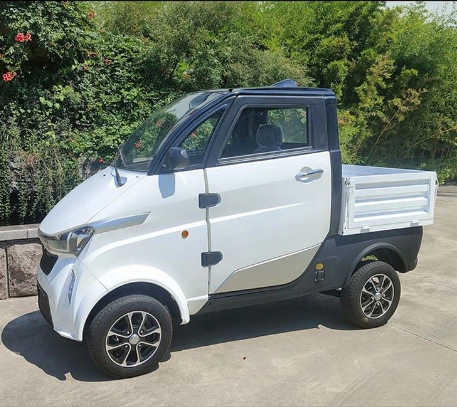Author:MarwenDate:2023-7-20

Technical Overview
Electric vehicle refers to a vehicle that is powered by an on-board power source and uses an electric motor to drive its wheels, meeting various requirements of road traffic and safety regulations. It uses electricity stored in the battery to start. Sometimes 12 or 24 batteries are used to drive the car, and sometimes more are needed.
No pollution, low noise
Electric vehicles without internal combustion engines generate exhaust gas during operation, which does not cause exhaust pollution and is very beneficial for environmental protection and air cleanliness, almost zero pollution. As is well known, pollutants such as CO, HC, NOX, particulate matter, and odor in the exhaust gas of internal combustion engine vehicles form acid rain, acid mist, and photochemical smoke. Electric vehicles have no noise generated by internal combustion engines, and the noise of electric motors is also lower than that of internal combustion engines. Noise is also harmful to the human auditory, nervous, cardiovascular, digestive, endocrine, and immune systems.
High energy efficiency and diversification
Research on electric vehicles has shown that their energy efficiency has surpassed that of gasoline powered vehicles. Especially in urban operation, cars stop and go, and the driving speed is not high,
Electric vehicles are more suitable. When an electric vehicle stops, it does not consume electricity. During the braking process, the electric motor can automatically convert into a generator, achieving the reuse of energy during braking deceleration. Some studies have shown that the same crude oil, after being roughly refined, is sent to a power plant for power generation, charged into batteries, and then driven by batteries. Its energy utilization efficiency is higher than that of refining it into gasoline, which is then driven by a gasoline engine. Therefore, it is beneficial for energy conservation and reducing carbon dioxide emissions.
On the other hand, the application of electric vehicles can effectively reduce dependence on petroleum resources and utilize limited oil for more important purposes. The electricity charged to batteries can be converted from energy sources such as coal, natural gas, hydropower, nuclear energy, solar energy, wind power, and tides. In addition, if the battery is charged at night, it can also avoid peak electricity consumption, which is conducive to balancing the load of the power grid and reducing costs.
Simple structure and convenient maintenance
Electric vehicles have a simpler structure, fewer operating and transmission components, and a smaller maintenance workload compared to internal combustion engine vehicles. When using an AC induction motor, the motor does not require maintenance, and more importantly, electric vehicles are easy to operate.
High power, short driving range
Electric vehicles are not as technologically advanced as internal combustion engine vehicles, especially the power supply (battery) has a short lifespan and high usage costs. The energy storage of the battery is small, and the driving range after a single charge is not ideal, making electric vehicles more expensive. But from a development perspective, with the progress of technology and the investment of corresponding manpower and resources, the problem of electric vehicles will gradually be solved. By leveraging strengths and avoiding weaknesses, electric vehicles will gradually become popular, and their prices and usage costs will inevitably decrease.
Power grid technology supporting development
The operational characteristics of electric vehicle battery replacement stations, as well as the key technologies and control strategies for connecting the replacement stations as distributed energy storage units to the power grid; Screening principles, grouping methods, and system schemes for battery cascade utilization; Replace the multi-purpose converter device of the station; Replace the integrated monitoring system of the station and energy storage station; Demonstration project for the integration of replacement stations and energy storage stations.
The characteristics of electric vehicle charging demand and the impact of large-scale electric vehicle charging on the power grid; Electric vehicle orderly charging control management system; Electric vehicle orderly charging test system.
Control strategies and key technologies for the interaction between electric vehicles and the power grid; Intelligent charging and discharging motors for electric vehicles, intelligent vehicle terminals, and interactive coordination control systems between electric vehicles and the power grid; Interactive experimental verification system between electric vehicles and the power grid; Inspection and testing technology for electric vehicle charging and discharging facilities.
New charging and discharging technologies for electric vehicles; Intelligent charging and discharging control strategy and detection technology for electric vehicles; Key technologies for interactive operation between charging facilities and the power grid.
Scaled electric vehicle battery replacement technology, measurement and billing, and asset management technology; The business model for operating charging facilities; A construction plan for the operation management system of an intelligent charging and swapping service network based on the Internet of Things.
↓Next [ The proportion of new energy vehicles in the total export value of automobiles has increased ]









